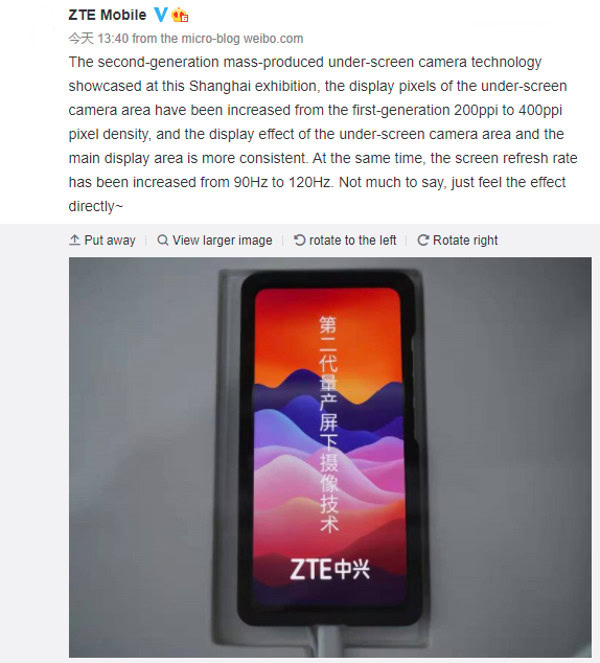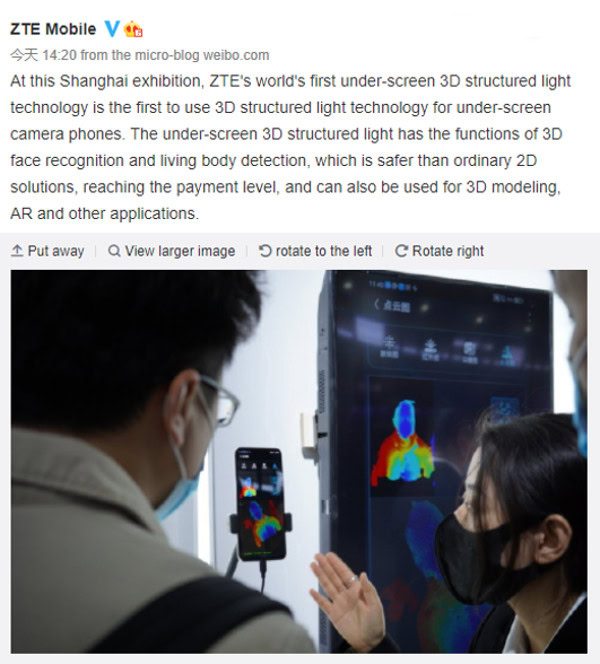[ad_1]

Credit: David Imel / Android Authority
- ZTE has revealed second-generation under-display selfie camera technology.
- It aims to reduce the haze effect seen in the display area above the camera.
- ZTE also announced under-display 3D face unlock tech.
The ZTE Axon 20 5G was the first major smartphone with an under-display selfie camera, enabling a proper full-screen experience without a notch, punch-hole cutout, or pop-up camera housing. Unfortunately, our first impressions of the selfie camera was that it was a long way behind conventional front-facing shooters.
The Chinese brand has now revealed its second-generation under-display selfie camera technology at the MWC Shanghai 2021 conference. ZTE’s Weibo account notes that it has increased the pixel density of the screen area above the selfie camera from 200PPI to 400PPI. Machine-translation also points to the area above the selfie camera and the rest of the display area being “more consistent.” Check out a screenshot of the post below.

In other words, the manufacturer aims to reduce the hazy effect seen in the display area above the selfie camera on the Axon 20 5G. It’s worth noting that former Android Authority reviewer David Imel said “any color but white” hides the haze pretty well. So a second-generation version of this tech should make the camera grid/haze very difficult to spot.
Unfortunately, ZTE didn’t reveal what the second-generation under-display selfie camera tech would bring in terms of image quality improvements. We thought the Axon 20 5G took low-quality selfies compared to conventional cameras, so hopefully the manufacturer is bringing meaningful tweaks in this regard.
One of the challenges with under-display cameras is that light needs to squeeze between the tiny gaps in the display in order to reach the camera. ZTE’s solution for the first-generation effort was to reduce the resolution/pixel density here to allow more light in. So we’re not sure what to make of ZTE’s new under-display camera having increased pixel density, suggesting the firm is using a different solution to address image quality concerns, or that it’s prioritizing design over picture quality.
This wasn’t the only tech ZTE showcased at the conference either, as it also revealed what it says is the world’s first under-display 3D structured light scanner. Check out the machine-translated post below.

3D structured light technology has been used for 3D face unlock (as seen on phones like the iPhone X and Mate 20 Pro), and ZTE indeed notes that its under-display solution can be used for 3D facial recognition. It also envisions its tech being used for 3D modelling, augmented reality, and payments.
Of course, the pandemic means that fingerprint scanners are likely more important for many than facial recognition. Nevertheless, ZTE’s under-display 3D face unlock serves as more evidence that we’re quickly moving to a full-screen smartphone world.
What do you think of under-display 3D face unlock? Give us your thoughts by voting in the poll below or leaving a comment.
 Loading poll
Loading poll[ad_2]
Source link